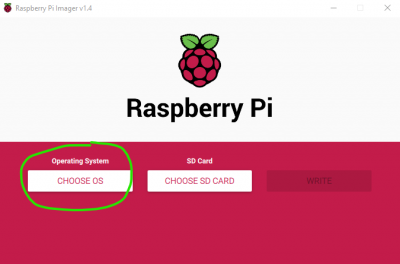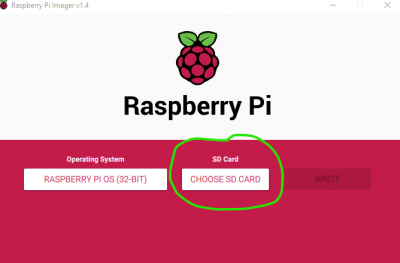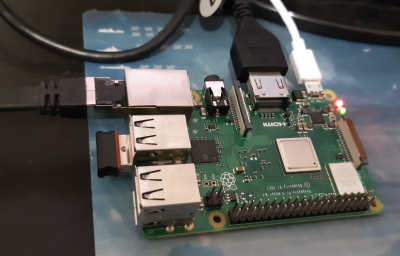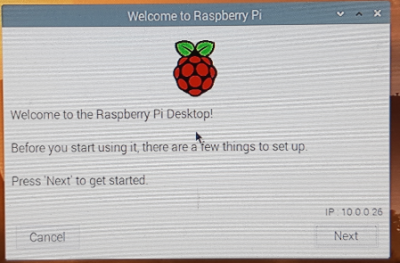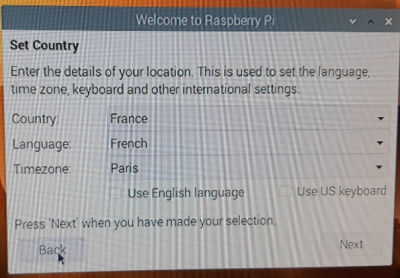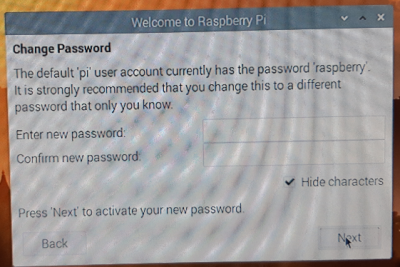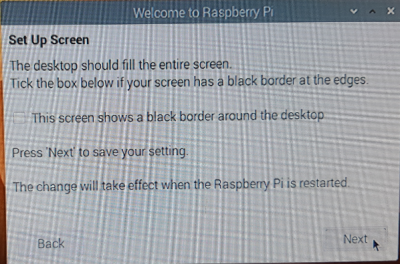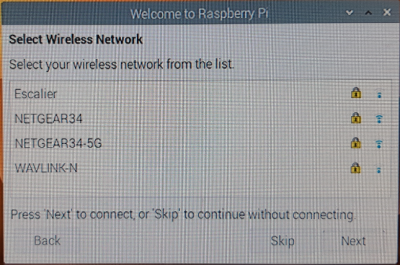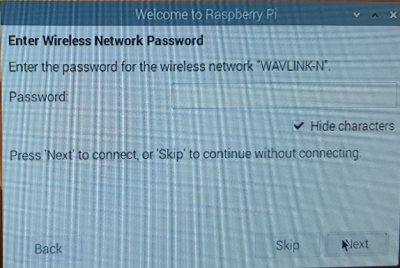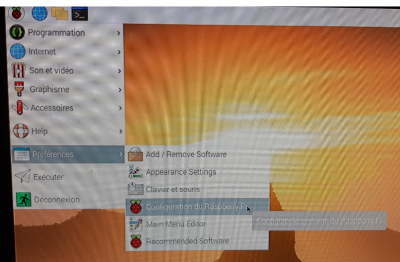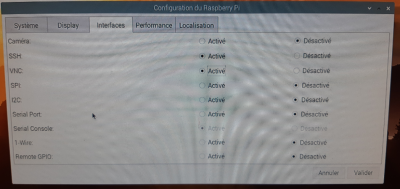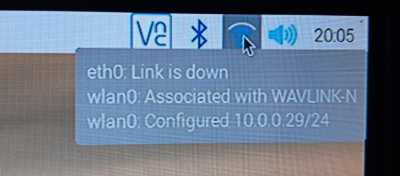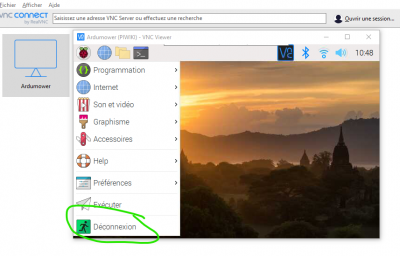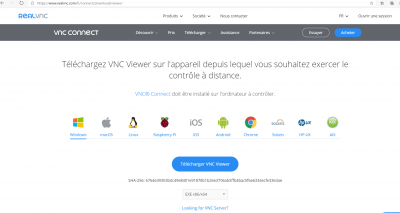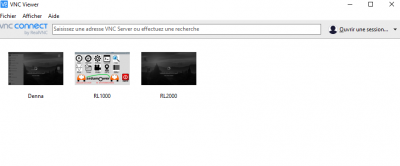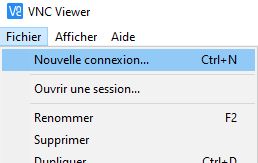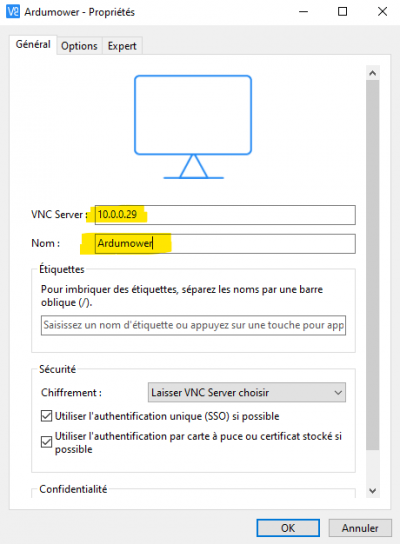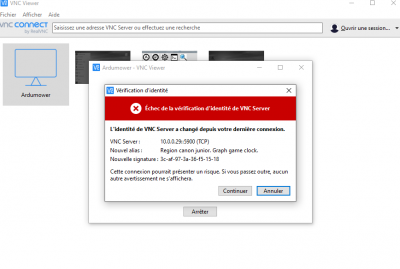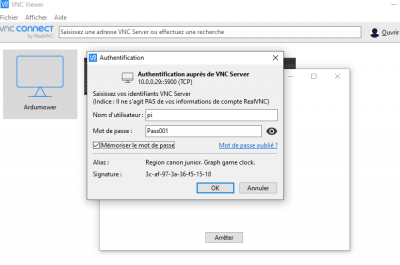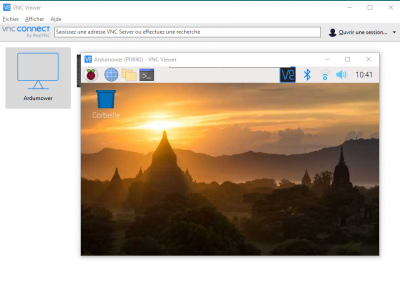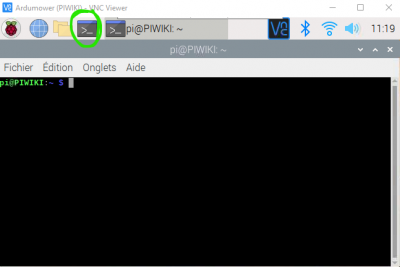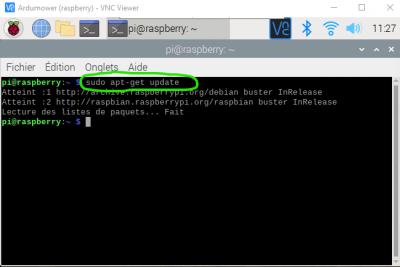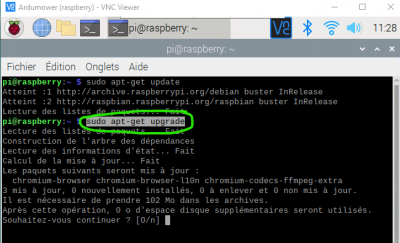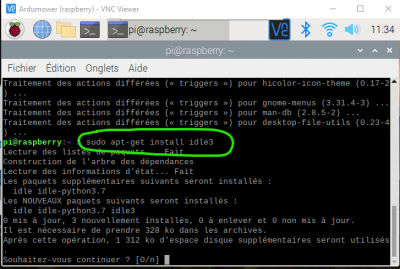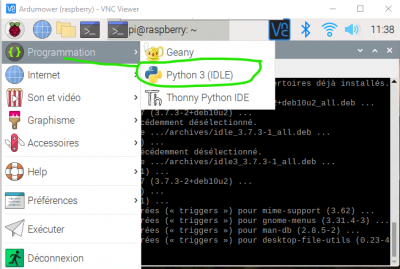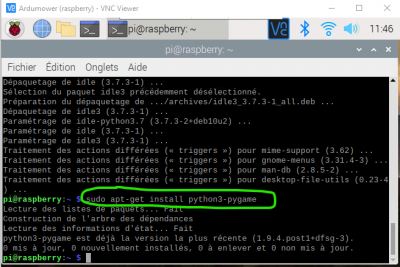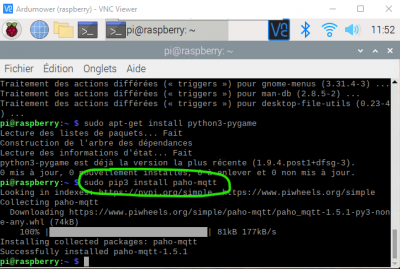AzuritBer Pi Firmware (English)
Inhaltsverzeichnis
Level 2 Raspberry Pi
A Raspberry Pi is connected over Due Native USB to the arduino
What you need
1 Raspberry PI 3B+ or PI4 (The Pizero W can work but very slowly and it's not the goal).
1 DC/DC voltage regulator to power the PI.Minumum 5A version from marotronics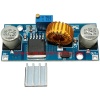 https://www.marotronics.de/5A-DC-DC-step-down-module-XL4015-with-heat-sink-eg-for-Arduino
https://www.marotronics.de/5A-DC-DC-step-down-module-XL4015-with-heat-sink-eg-for-Arduino
1 USB mouse,keyboard for setting.You can simply use a standard one for the setting and disconnect it after But it's also possible to use a small one like that to drive the mower remotely in manual mode.
1 PowerBank or DC/DC voltage regulator connected to PCB1.3 or power supply for the raspberry pi minimum 3A
1 HDMI cable to see the PI desktop on your TV or HDMI Screen.
1 TV or monitor with HDMI input to easily see the raspberry IP adress on the first boot.
Build the SD Card
You need to first write the raspbian OS on the SD Card .
It's easy using the main raspberry.org site.
You can connect you Micro SD CARD to your laptop or PC using correct adaptor
No need to format at the point but All Data present on it will be destroyed.
Connect to : https://www.raspberrypi.org/
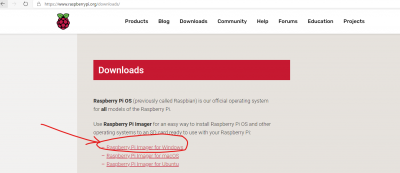 Select Raspberry Pi Imager for Windows
Select Raspberry Pi Imager for Windows
Wait until the download is finish and launch the downloaded prog.
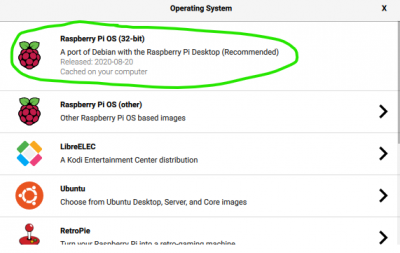 Use the recommended one with Desktop
Use the recommended one with Desktop
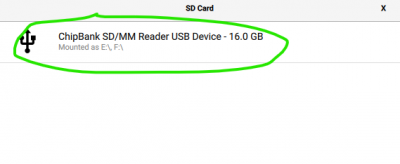 Select your SD CARD Be careful to select the correct one.
Select your SD CARD Be careful to select the correct one.
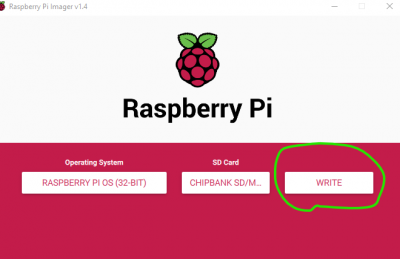 Select Write and wait until down (can take 15 to 60 Min according your internet speed).
Select Write and wait until down (can take 15 to 60 Min according your internet speed).
Remove the SD CARD for your PC.
PI Initial boot with Desktop
Connect everything on the PI ; Here the Ethernet cable is used but it's also possible to use WIFI
USB Dongle for mouse.
HDMI cable from PI to TV or monitor. (Without TV or monitor is also possible : Search on Google and Youtube)
Ethernet cable if possible or WIFI (On first boot the PI need a good connection to the net for last update)
Power (5V if you use DC/DC voltage regulator) on Micro USB
On first start you can see expand sd card,reboot and welcome message with the IP Address for Ethernet
Select your language and location.
Change password and remember it (we need it later to connect to PI over wifi) For easy wiki : Pass001 but use another one
Setup screen, simply click next
On the WIFI connecting page select the WIFI network that you want to use for all the setting duration (You can change it later for an outdoor one)
Enter your wifi password and follow the next update step (can take again 10 to 30 minutes)
REBOOT.
We need to activate VNC serveur to whare the desktop with your PC.
Using Start icon : Go to Préférence and Configuration du Raspberry
In the Tab Interfaces Activate SSH and VNC
Now on the upper right corner of the desktop a new icon show that VNC Serveur is running .
Move your mouse on the Ethernet or Wifi icon to see the IP adress of the ethernet and WIFI one.
The WIFI one is the most important (Here 10.0.0.29)
Disconnect the ethernet cable and Reboot (Not Shutdown) All Using Start icon and Log Out.
First Remote PC connection over Wifi
PI SIDE
Pi is running and you can see the desktop
PC SIDE or Tablet / Phone
Remember that we set the Password to Pass001 and ip adress of the PI WIFI is 10.0.0.29 NOW WE WORK ON PC OR TABLET
You have many possiblity (SSH viewer, MobaXterm, Remote Desktop etc...) , In this case I use free real VNC Viewer (Not VNC Serveur) to connect to the PI over your network.
Go to https://www.realvnc.com/fr/connect/download/viewer/
And select the correct donwload according your platform.
Instal the software and start it (VNC Viewer). In your case the tab is empty (No RL1000,Denna etc....)
On upper left choose File / New Connection
Into VNC Serveur : enter the IP of the raspberry (ethernet or WIFI adress) and give a name to the connection.
It's possible that a new security box is shown on the screen Select Continue
You can see the new Connection named Ardumower Double click on it.
UserName is pi and password is Pass001 or the one you choose on first start part.Check remember password
The Clone of the Pi desktop is now on your PC and you can do everything exactly like if you use localy the raspberry ,But from your Sofa
Pi Software part
NOW WE WORK ON THE PI USING VNC VIEWER ALL COMMAND NEED TO RESPECT THE CASE
You need to send some command to the PI Terminal to install so software.
To see the terminal click on the >_ icon in the taskbar
Copy and past all the following command in the terminal after the $ for the rest of this wiki part
sudo apt-get update
sudo apt-get upgrade
This download can take a lot of time , so be patient and answer Yes to upgrade
Piardu.py use Python3 , so we need to install the idle to have access to it and edit if needed (answer Yes for installing)
sudo apt-get install idle3
At the end of the Python idle installation you need to have a new icon into Start / Programing menu.
It's possible to drive the mower in Manual mode with PS4 joystick but need pygame software (Maybe already include but it's better to do it)
sudo apt-get install python3-pygame
It's possible to controle mower over mqtt and use Home Automation but need python3 paho software part.
sudo pip3 install paho-mqtt
Piardu use software named KST to plot all the data
Seach KST Plot on Google for more info . Again copy and past this into the Pi terminal:
sudo apt-get install kst

